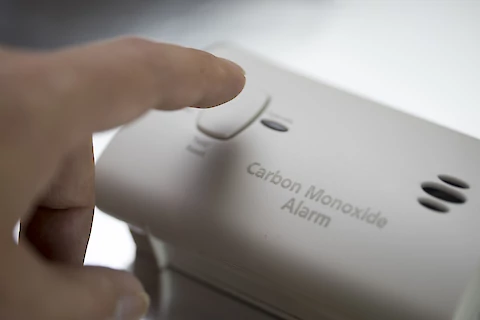
As a senior living at home, you need to take care of many basic home care tasks. These include ensuring that your home is safe from carbon monoxide. Carbon monoxide (CO) is an invisible and odorless gas that can be life-threatening if not monitored properly. Carbon monoxide detectors are necessary for all homes. They detect any leaks from appliances or heating systems before it becomes a serious situation. Seniors may need to carefully keep track of their carbon monoxide detectors and make sure they remain in working order.
What Is Carbon Monoxide?
Carbon Monoxide is an odorless and colorless gas resulting from the incomplete burning of fossil fuels like oil, natural gas, wood, or coal. It is a serious health hazard for anyone since it can cause injury or even death if not detected. Seniors, however, may be particularly vulnerable to the possible effects of carbon monoxide.
Why Is It Dangerous?
Carbon monoxide is dangerous because it diminishes the amount of oxygen available in the air, preventing it from distributing effectively. Without enough oxygen, organs such as your heart and brain can be quickly affected by CO poisoning. Furthermore, carbon monoxide inhalation can also cause dizziness, fatigue, memory loss, and other symptoms that could impede seniors' health even further.
Potential Sources of Carbon Monoxide Leaks
Most of the time, gas appliances, chimneys, furnaces, and fireplaces are commonly associated with carbon monoxide leaks. If you have older natural gas or propane heaters in your home, those can be especially dangerous if they haven't been recently inspected. Asbestos-based insulation materials can also produce CO when heated during colder weather months.
Tips for Ensuring Carbon Monoxide Detectors Are Working
There are a few ways to protect against carbon monoxide exposure in the home. First, make sure your home has at least one carbon monoxide detector, located near potential sources of carbon monoxide. Then:
- Test the Alarm: Testing out the alarm on each of your detectors monthly can ensure it is working and will sound if needed. Remember to periodically check all alarms, whether they are battery-powered or wall outlet powered, so they remain reliable throughout use. Any time they do not test as functional, replace them as soon as possible.
- Replace the Batteries: Like your smoke detectors, your carbon monoxide detectors should have the batteries replaced every six months. Using the time change as an opportunity to replace batteries can make it easier to remember.
- Replace Detectors Regularly: Replacement devices should be done every five years due to advancements in technology.
Do You Need Extra Help at Home?
One of the responsibilities often involved in taking care of your home is replacing the batteries in your carbon monoxide detectors. Often, seniors find that they need increasing amounts of support with those basic home care tasks. At Senior Helpers Harrisburg, we can provide a variety of home care services. These include assistance with smoke detectors and carbon monoxide detectors, to seniors in Harrisburg, Camp Hill, Mechanicsburg, Palmyra, and Dauphin County. Contact Senior Helpers Harrisburg today to learn more about our in-home care options.